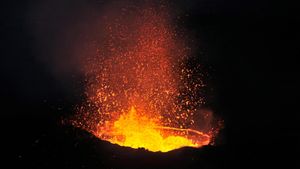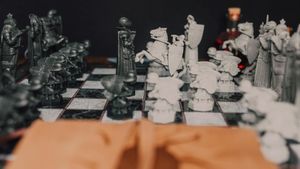Ghosts have haunted the realms of storytelling for centuries, offering not only chills down the spine but also reflections of human conditions, unresolved issues, and societal fears. Media representations of ghosts have evolved significantly across various forms, including film, literature, and graphic novels. This exploration delves deep, examining how the specters of the past continue to shape our narratives today.
One of the most notable figures in the adaptive art of ghost storytelling is filmmaker M. Night Shyamalan, whose breakout film, The Sixth Sense, established him as a master of suspense and emotional depth. Its main line, "I see dead people," unearthed complex narratives nested within ghost stories, allowing viewers to tap not only fear but also empathy for the spirits who wander. It wasn’t merely about ghosts; it was about the human emotions interwoven with their tales. Such movies set the tone for the late 1990s and early 2000s, where audiences were captivated by the balance between horror and the psychological nuances conveyed through ghostly narratives.
Representations of ghosts differ greatly across cultures and contexts. For example, Kenji Mizoguchi's Ugetsu portrays ghosts as extensions of human desires and regrets, delving deep within the psyche of its characters. The characters are not merely haunted, but they grapple with their choices, illuminating the idea of morality and consequences. This theme transcends time, embracing fundamental human fears and desires, common threads for echoing emotions throughout literary history.
On the opposite end of the spectrum, Guillermo del Toro’s works often portray ghosts through the lens of childhood fears and the innocence lost, like those found in The Devil’s Backbone and Pan’s Labyrinth. Del Toro utilizes ghostly figures not only to instill fright but to symbolize lost innocence and the children’s perspective of the adult world's horrors. His delicate storytelling, painted with rich visuals, transforms traditional ghost stories, exploring the burden carried by those who encounter the spirits. It raises the question: Do these narratives help us confront our own fears, or do they simply reflect them?
Meanwhile, the graphic novel arena is also breathing new life and imagination around the discussion of ghostly tales. Briana Loewinsohn's Raised by Ghosts strays from the conventional themes of fear, presenting ghosts as metaphors for memories and personal growth. The protagonist navigates their recollections through reality mixed with the artistic renderings of ghostly figures. Loewinsohn argues, "I think ghosts are fascinating because they symbolize unresolved issues and the human condition,” encapsulating how modern storytelling reinterprets their existence.
This melding of visuals and prose invites readers to ponder their past, making ghosts relatable and possibly sympathetic even. Such works showcase how ghost narratives don't need to rely solely on horror but can explore themes of adolescence, identity, and familial connections.
Even comedic takes on ghosts, such as Ghostbusters, offer compelling insights. Blending humor with tropes, it capitalizes on childhood fears familiar to many. Tapping directly on societal fears—it highlighted the absurdity of the unknown. This ambivalent portrayal allows audiences to confront and laugh at their fears, lessening the psychological grip ghosts may hold.
Shifting perspective also appears with filmmakers such as Kiyoshi Kurosawa, whose Pulse meditates on loneliness through ghostly apparitions visible via webcams. It's not just horror; it's commentary on social isolation and the world's digital disconnect. By personifying the unreal, these ghosts echo our modern fears—a collective commentary on our existential crises.
Traditionally, ghosts serve as harbingers of dread. They prompt humanity to confront its mortality and explore the intricacies of love, loss, and redemption. Works like The Ring amplify terror but also tap deeply rooted fears of the unknown and inevitable fate, blending cultural folklore with modern anxieties. Each director’s unique vision captures how ghosts evolve to articulate different facets of fear and grief across generations.
Literature, too, has seen notable ghostly incarnations—Henry James’s The Turn of the Screw and Shirley Jackson’s The Haunting of Hill House reveal layers of psychological horror intertwined with society's unconscious fears. These narratives suggest the ghosts may represent mental anguish and collective fears rather than mere paranormal beings. Ghosts become conduits through which we can explore complex human emotions; their stories evolve, shifting from traditional horror to deep psychological examinations.
Despite the vast differences throughout ghostly representations, the common thread tends to encapsulate the human experience. Ghosts have become reflections of our modern anxieties, shedding light on the depths of despair, longing, and hope. They swirl around us—good and bad—challenging us to face the very issues we sometimes wish to deny.
Looking to the future, it’s evident these spectral figures will continue to haunt our media. Every new portrayal emanates distinct perspectives shaped by contemporary society, reflecting how art remains deeply connected to emotional truths. Whether instilling dread or invoking empathy, ghosts will undoubtedly persist as enigmatic figures, reminding us of our fear of the unknown and the threads connecting us all to our past.



